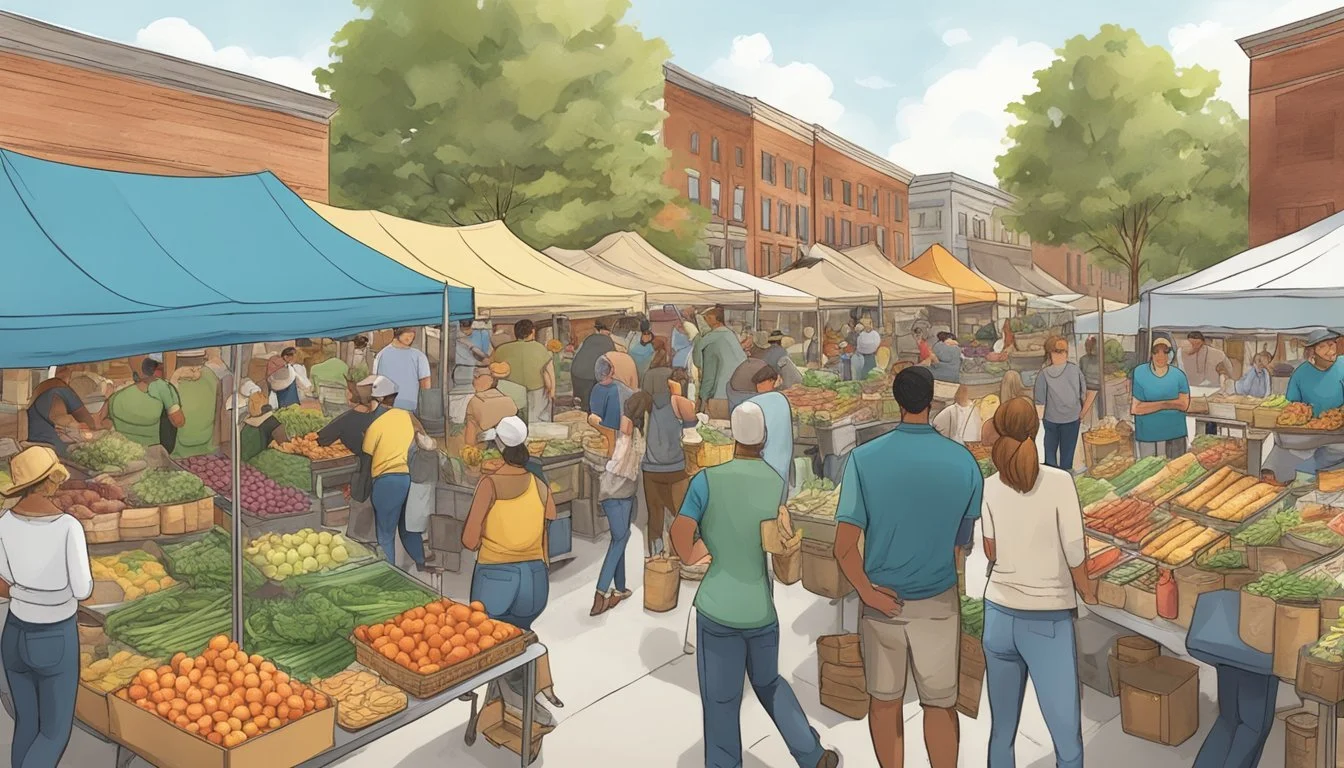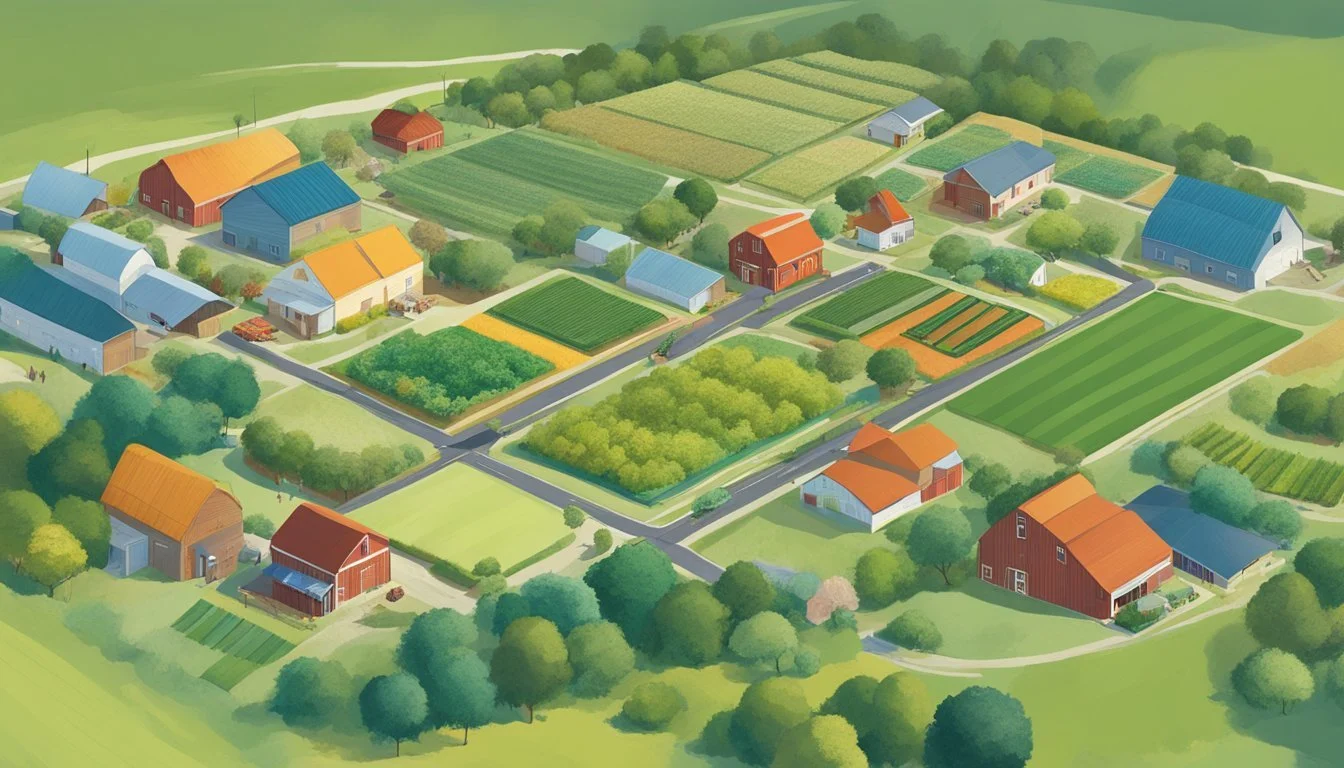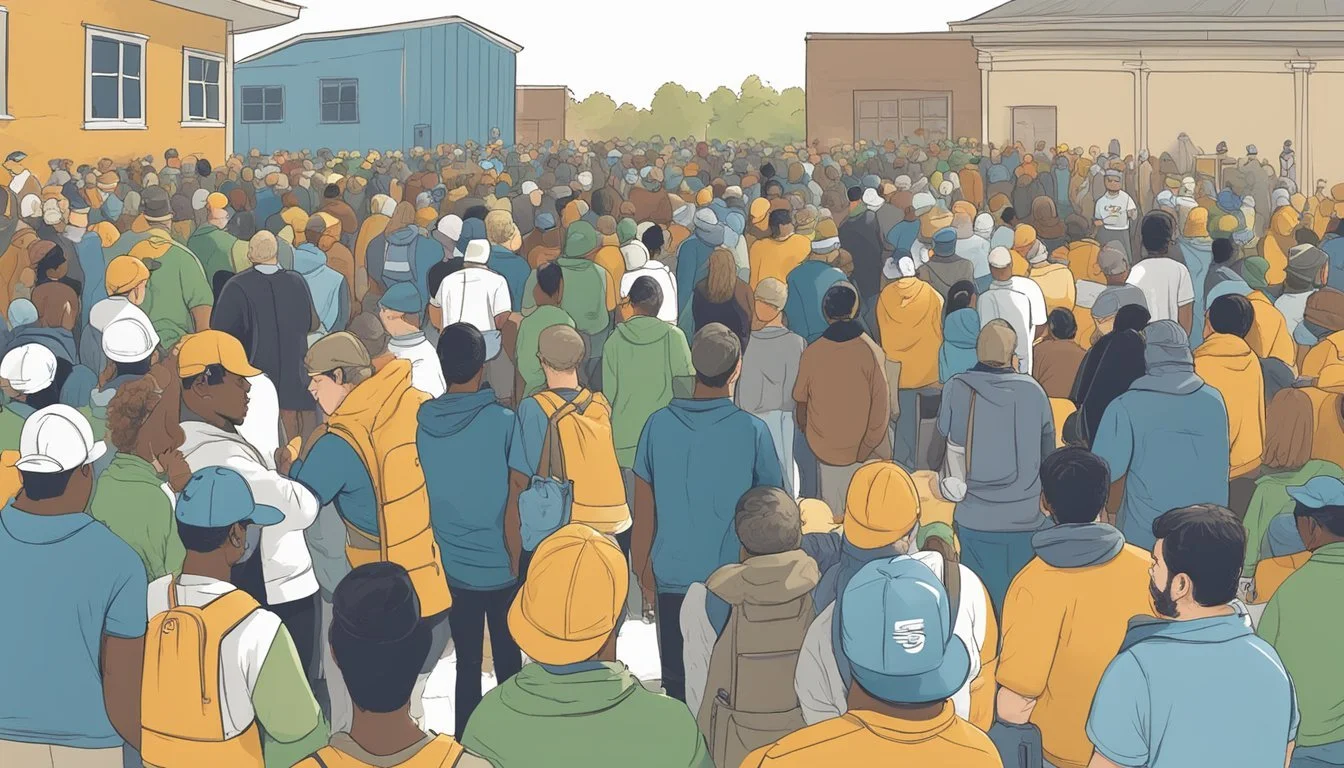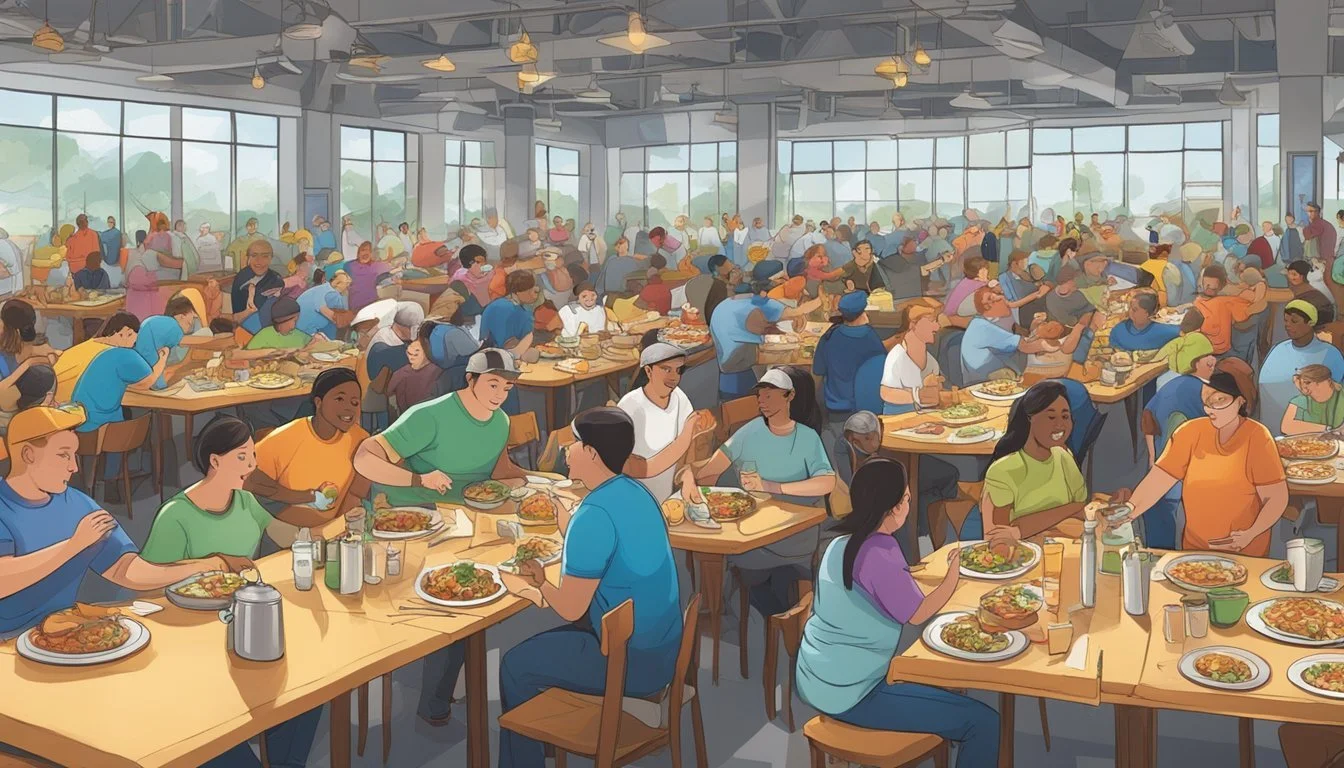Missouri Food Challenges
A Guide to the State's Ultimate Eating Contests
Missouri, known for its diverse culinary landscape, offers an array of eating challenges that cater to those looking for a gastronomic dare. These eating contests, found in various restaurants throughout the state, are not just about enjoying the flavors on offer but also about the thrill and gratification that comes from conquering sizable portions or unique food combinations. From the bustling streets of St. Louis to the lively locales of Kansas City, Missouri's food challenges attract both local and visiting food enthusiasts who are eager to test their eating prowess.
The challenges often featured in these contests range from finishing massive burgers with multiple patties to polishing off a mountain of fries accompanied by a hefty milkshake. Participants face a variety of hurdles such as time limits, sheer quantity, or the fiery heat of spicy wings. Those who succeed may be rewarded with their meal free of charge, a place on the establishment's wall of fame, or even a celebratory t-shirt marking their achievement. Missouri's food challenges embody the spirit of competition and the love of food, making them a staple of the local dining experience for the brave and hungry.
Historical Perspective of Missouri's Food Challenges
Missouri's agricultural and food industries have long faced challenges that significantly affect both the state's economy and the health of its residents. The convergence of economic pressures and health issues related to food insecurity has created a historical backdrop that underscores the current situation.
Economic Impact on Food Systems
In Missouri's history, economic downturns have often led to heightened food security concerns. A state with a vibrant agricultural sector, comprising over 100,000 farms, the economic well-being of Missouri is tied to the performance of its food systems. The flux in eating patterns, health demands, and supply chains have left an indelible mark on Missouri, which, despite a robust footprint in the food industry, has had to navigate the complexities of market demands and the volatility of agricultural productivity.
Health Issues Derived from Food Insecurity
The repercussion of food insecurity on public health in Missouri cannot be overstated. One in five households with children in the state deal with inconsistent access to adequate food, which inevitably leads to a spectrum of health issues. A lack of nutritious food options can lead to chronic conditions such as obesity, diabetes, and heart disease. Additionally, the challenge of accessing health and medicine intersects significantly with the experience of hunger experienced by many Missourians, exacerbating disparities and complicating efforts by organizations like Feeding Missouri to ensure food security for all.
Current Food Challenges in Missouri
Missouri faces multifaceted food-related challenges, from hunger to the impacts of food production and distribution. Each aspect plays a critical role in the food security and sustainability of the state's residents.
The Face of Hunger in Missouri
Food insecurity remains a critical issue within Missouri, affecting countless families and individuals. A report from the University of Missouri underscores ongoing hardships, with Missouri's food banks servicing hundreds of thousands each year. In specific counties, the extent of hunger reflects disparities in access to sufficient, nutritious food.
Analyzing the Role of State Government
The state government oversees key interventions that aim to mitigate food insecurity. Through legislation and support of initiatives like Missouri's Strategic Approach to Today's Food Challenges, they endeavor to foster a resilient food system adaptable to growth and changing health patterns.
Contribution of Food Production and Distribution
Missouri benefits from a strong agricultural base which boosts food production. However, effective distribution to all Missourians remains a logistical and infrastructural endeavor. Innovation and strategic planning are vital to sustaining the state's vast food systems, as highlighted by Missouri's capacity to navigate challenges and embrace opportunities in the food industry.
Solutions and Innovations
Missouri addresses food challenges with a blend of academic research and technological advancements, alongside grassroots efforts to improve community health and nutrition. These solutions leverage the state's agricultural strengths, ensuring access to vital resources.
University-led Research and Engagement
At the forefront of academic research, the University of Missouri and the MU Extension play vital roles in shaping a sustainable food future. Their interdisciplinary approach, spearheaded by the Interdisciplinary Center for Food Security, extends into areas like improvement of crop yields and development of resilient farming practices. Projects focused on horticulture and nutrition guide both producers and consumers toward healthier and more efficient food systems.
Grassroots Initiatives and Community Health
Grassroots movements work alongside organizations to address food insecurity directly. These initiatives harness community efforts to support food banks and ensure access to nutritious food. Through these programs, health and nutrition are promoted, improving community health outcomes. Partnerships with local farms emphasize the distribution of fresh, locally-sourced produce, meeting both health and environmental goals.
Advances in Missouri's Agriculture and Livestock
Missouri's agriculture and livestock sectors benefit from innovative farming technologies and best practices. Emphasis on robust dairy farming techniques improves yield and reduces waste. Additionally, advancements in livestock management help maintain Missouri's status as a leader in agricultural production. Integration of innovation in these areas is key to creating sustainable and efficient food solutions that ensure long-term success for the state's diverse agricultural activities.
Notorious Missouri Food Challenges
Missouri offers a smorgasbord of culinary trials that test the limits of even the most voracious eater's capacity. From oversized meat challenges to mountainous piles of carbs, these notorious contests are not for the faint of heart or stomach.
Bacon and Pork Chop Spectacles
Missouri's bacon (how long does bacon last?) and pork chop spectacles are a true testament to carnivorous fortitude. At the heart of this category lies the Redneck Challenge, a daunting combination of hefty pork chops, (What wine goes well with pork chops?) piles of pulled pork, and crispy bacon, often served with hearty sides like baked beans and hush puppies.
Burger Challenge: The Five Pound Feat
The Burger Challenge draws meat lovers far and wide, featuring a Five-Pound Burger that is not for the faint-hearted. This colossal burger towers with multiple beef patties, complemented by layers of cheese, onion rings, and often accompanied by a pound of fries. Completing this challenge is a rare accomplishment, rewarded by some establishments with the meal on the house.
Feats of Fries, Spaghetti, and Other Foods
Beyond the bun, other notable challenges involve an array of foods that range from a large bowl of spaghetti with a giant meatball to a mound of hash browns and toast as part of a gut-busting breakfast challenge. Some contests throw in a mix of sides, such as sliders or a burrito, to up the ante. Each of these trials not only pushes the boundaries of quantity but also the contenders' willpower.
Understanding Food Systems in Missouri
In Missouri, food systems play a crucial role in the state's economy and public health, involving a range of stakeholders including food companies and influencing residents' nutrition and eating patterns.
Role of Food Companies and U.S. Food Industry
Food companies in Missouri are integral to the U.S. food industry, encompassing a variety of activities such as food production, processing, and distribution. They form a complex network that collaborates with farmers, markets, and transportation entities to move food from the farm to consumers' tables. Within the state, organizations such as MU Extension have taken an active role in fostering community-based food systems, aiming to bolster economic impacts, enhance food access, and improve food security.
Economic Contribution: Food companies substantially contribute to Missouri's economy, from small-scale producers to large agribusinesses.
Regulation and Food Safety: These companies are subject to regulations to ensure food safety, supporting consumer confidence in Missouri's food products.
Influence of Eating Patterns and Nutrition
Missouri's eating patterns and the state's approach to nutrition reflect not only local culture but also the interplay between local food systems and available food options. This relationship affects overall health outcomes and food security in the state.
Local Food Systems: Initiatives promoting local food systems encourage residents to consume locally-sourced food, which has implications for nutrition by potentially increasing access to fresh produce.
Dietary Trends: Missouri is witnessing shifts in consumer preferences, with a rising demand for nutritionally rich and ethically produced food, influenced by nationwide trends.
Community and Academic Efforts to Combat Food Challenges
Missouri faces a substantial challenge with food insecurity, but several community and academic entities are rallying to address these concerns. These efforts are characterized by educational outreach, research-driven actions, and strategic partnerships.
Educational Programs by MU Extension
The MU Extension undertakes a vital role in educating Missourians about food systems. They provide resources that describe and utilize community food systems language and tools, aiming to elevate community food security. These educational efforts include community engagement through shared meals and discussions, where participants are encouraged to define food priorities in their regions.
Action by the MU Interdisciplinary Center for Food Security
At the forefront of research on food insecurity, the Interdisciplinary Center for Food Security at the University of Missouri focuses on understanding and addressing both the causes and consequences of hunger. They contribute knowledge that guides policymakers, researchers, and community agencies with the goal of fostering food-secure communities both within Missouri and nationwide.
Partnerships for Nutrition and Health
Structured collaboration often advances the fight against food insecurity more effectively than individual efforts. Initiatives like the mini-grant projects funded by the MU Extension exemplify how partnerships can catalyze change. These projects aim to enhance the Missouri food system while encouraging cross-team cooperation, with special emphasis on nutrition and health.
State and Local Systems Addressing Hunger
Missouri has implemented systems and policies to mitigate hunger, with efforts focused particularly in urban areas like Columbia and St. Louis. Initiatives include enhancing food access, leveraging farmers markets and food banks, and examining the impact of state policies on food security.
Food Access Initiatives in Columbia and St. Louis
In Columbia, the Food Assistance & Hunger in the Heartland report underscores ongoing efforts to connect residents with nourishment through local food banks and community programs. Similarly, the City of St. Louis works with local organizations to develop sustainable food systems that address food desert challenges, ensuring that healthy food is both accessible and affordable.
The Role of Farmers Markets and Food Banks
Farmers markets play a crucial role across Missouri, offering fresh, local produce that supports both economic sustainability and public health. They not only facilitate healthier lifestyles but also act as hubs for community engagement and education about nutrition. Food banks, on their part, are essential in providing emergency food aid to those in need. The collaboration between these markets and the food banks helps to create robust food-assistance networks.
Impact of State Policies on Food Security
The Missouri state government actively implements policies aimed at sustaining its food system while tackling food insecurity. Legislation and programs that incentivize the donation of agricultural surpluses to food banks, for instance, help to strengthen the state's response to hunger. On a larger scale, these policies reflect an understanding of the intricate connections between food system health and individual food security.
The Impact of Socioeconomic Factors on Food Accessibility
Socioeconomic factors play a critical role in shaping food accessibility in Missouri, with utilities, medical care, housing, and the recent pandemic creating significant disparities that need to be addressed.
Addressing Disparities in Utilities, Medical Care, and Housing
In Missouri, disparities in access to utilities, medical care, and affordable housing contribute to the complexity of food insecurity. Households struggling to pay for electricity, water, or heating often must make difficult choices, potentially sacrificing food quality or quantity to cover these essential services. Furthermore, inadequate medical care can exacerbate health conditions, leading to increased medical expenses and further reducing a household's ability to purchase nutritious food. Affordable housing also plays a pivotal role, as families spending a disproportionate amount of income on rent may have limited funds left for food, which can increase their reliance on cheaper, less nutritious options.
The Consequences of the Pandemic on Food Security
The COVID-19 pandemic has intensified food security issues, disproportionately affecting low-income families. Job losses and reduced hours have led to a loss of income, making it more difficult to afford basic necessities, including food. Although government assistance and community efforts have provided some relief, the long-term effects remain a concern. Increased demand for food assistance programs and the strain on food supply chains are just a few examples that highlight the ongoing challenges faced by Missourians dealing with food insecurity in the pandemic's wake.
Future Projections for Food Challenges in Missouri
Missouri is poised for transformative growth in its food systems network, yet faces the imperative task of ensuring long-term food security for children.
Predicting Growth and Changes in Food Systems Network
The food systems network in Missouri is expected to undergo significant changes, adapting to shifts in consumer eating patterns, health demands, and supply chain dynamics. With nearly 400 food companies and a robust agricultural presence, the state is forecasted to leverage technological innovations to sustain growth. Key factors influencing this progression are the integration of smart farming techniques and a concerted response to accommodate the rise of plant-based diets and environmentally conscious consumers.
Long-Term Strategies for Children's Food Security
Children's food security remains a high priority in Missouri, where strategic initiatives are key to dealing with the challenge. Initiatives bolstering educational outreach and nutritional programs aim to cut childhood food insecurity rates, which continue to be a pressing concern. The intent is to forge partnerships between food banks, schools, and policy-makers to craft a cohesive framework for support, where the nourishment of children transcends socioeconomic barriers, ensuring every child in Missouri has access to healthy food consistently.










